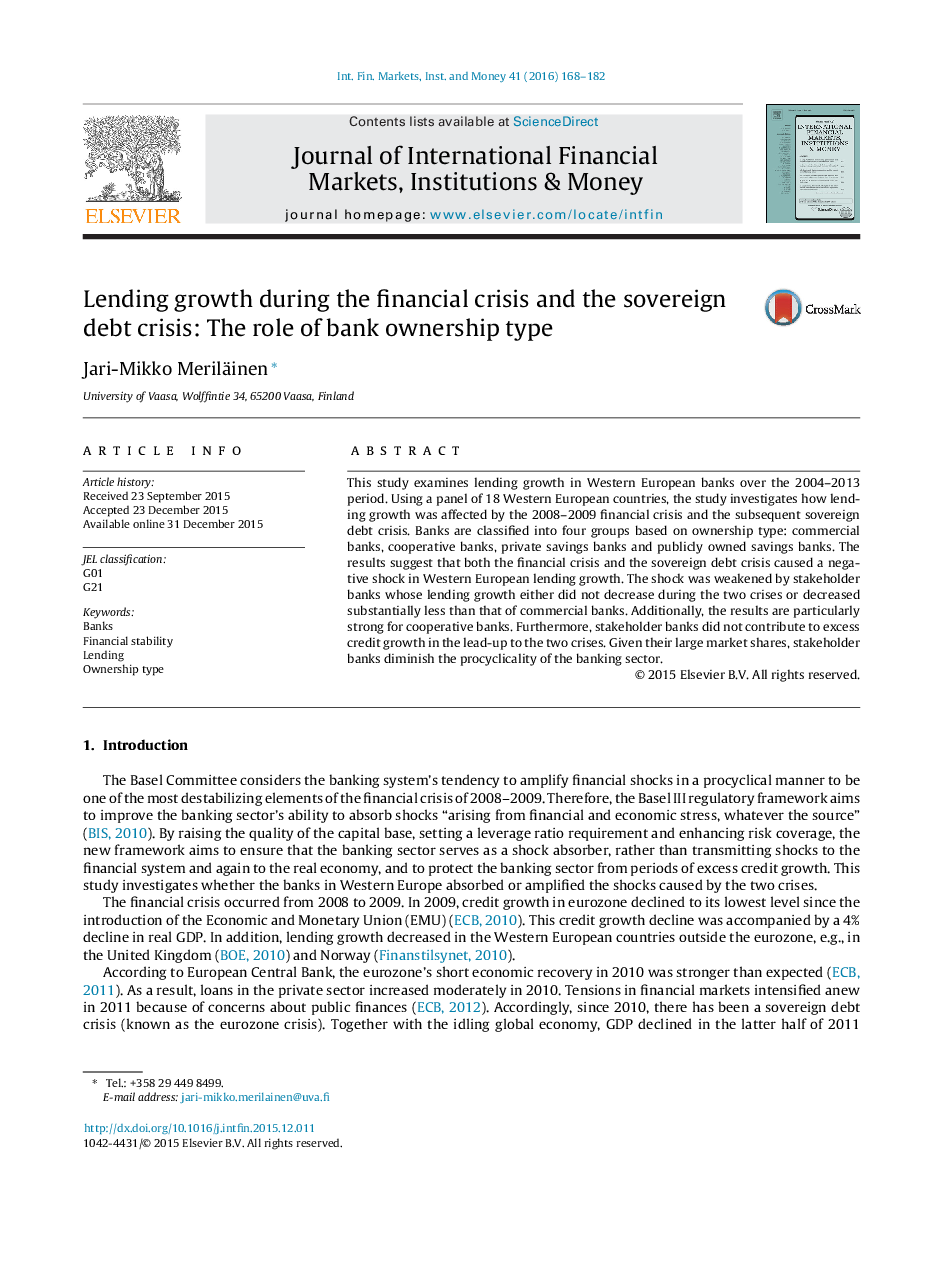| Article ID | Journal | Published Year | Pages | File Type |
|---|---|---|---|---|
| 963896 | Journal of International Financial Markets, Institutions and Money | 2016 | 15 Pages |
•On average, West European banks’ lending growth is procyclical.•The lending growth was high in the pre-crisis era and succumbed in the financial crisis of 2008–2009.•Stakeholder banks’ lending is either cycle-neutral or less procyclical than lending of commercial banks.•The result is the strongest for cooperative banks.•As a consequence, lending growth is not procyclical in the countries where stakeholder banks have a large market share.
This study examines lending growth in Western European banks over the 2004–2013 period. Using a panel of 18 Western European countries, the study investigates how lending growth was affected by the 2008–2009 financial crisis and the subsequent sovereign debt crisis. Banks are classified into four groups based on ownership type: commercial banks, cooperative banks, private savings banks and publicly owned savings banks. The results suggest that both the financial crisis and the sovereign debt crisis caused a negative shock in Western European lending growth. The shock was weakened by stakeholder banks whose lending growth either did not decrease during the two crises or decreased substantially less than that of commercial banks. Additionally, the results are particularly strong for cooperative banks. Furthermore, stakeholder banks did not contribute to excess credit growth in the lead-up to the two crises. Given their large market shares, stakeholder banks diminish the procyclicality of the banking sector.
